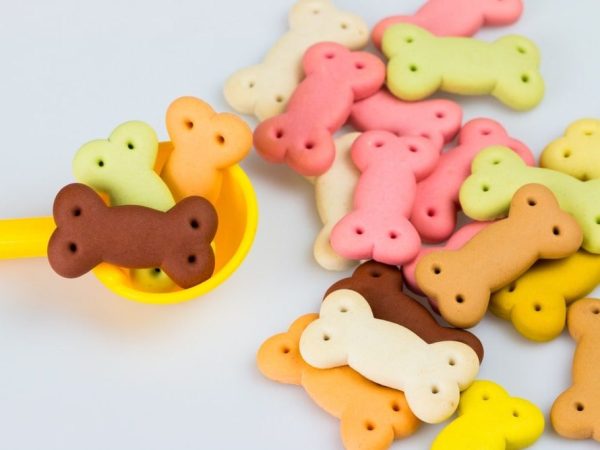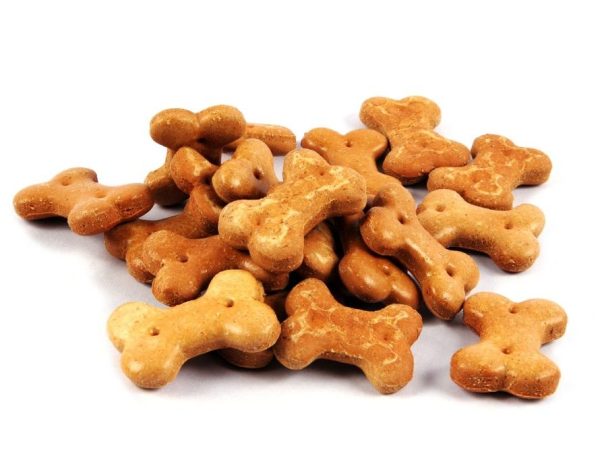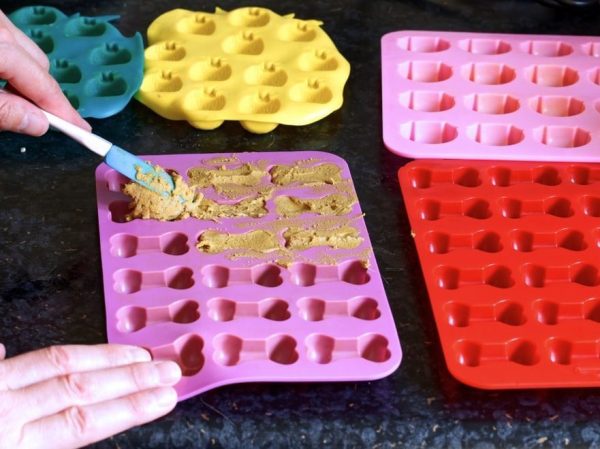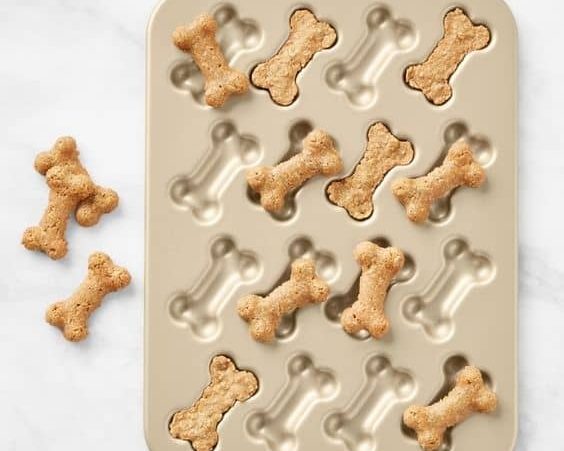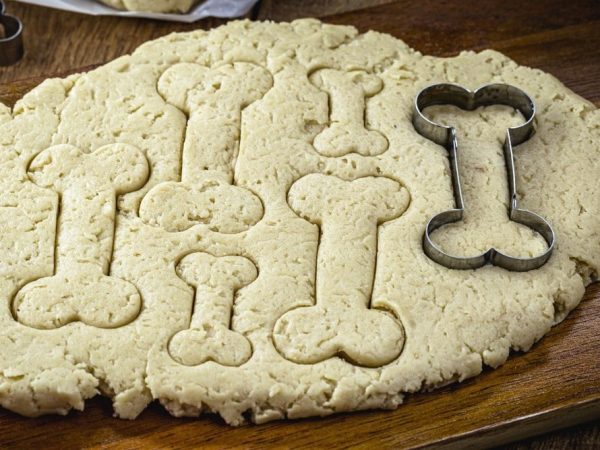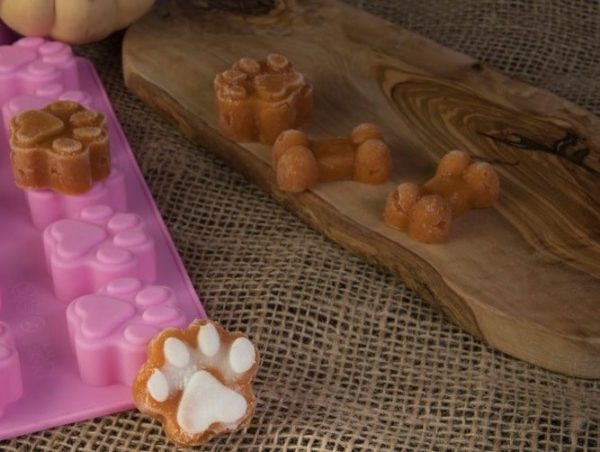This post is also available in:
Français (French)
Español (Spanish)
Dog owners always want to ensure their furry friends are happy and healthy.
One way to achieve this is by making homemade treats that are free from harmful chemicals and preservatives. However, shaping these treats can be a daunting task, especially for those who lack culinary skills. This is where dog treat molds come in handy.
Dog treat molds are specially designed tools that make it easy to create uniform and attractive homemade dog treats. They come in various shapes and sizes, giving pet owners the freedom to choose what works best for their pup’s preferences. Whether one wants to make bone-shaped or paw print treats, there is a mold available for every occasion.
In this article, we will delve deeper into the benefits of using dog treat molds, the different types available in the market, how to use them effectively, some tasty homemade recipes as well as tips on storing and serving your furry friend’s delicious treats.
- Dog treat molds allow for fun and unique homemade treats tailored to a dog’s tastes and preferences.
- Homemade dog treats can be made with nutritious ingredients and proper storage techniques can maintain quality and longevity.
- Decorating and shaping homemade dog treats can make them both tasty and visually appealing.
- Using dog treat molds makes the process of making homemade treats easier and more consistent.
Benefits of Using Dog Treat Molds
You’ll love using dog treat molds because they make it easy to create fun and unique treats that will have your furry friend wagging their tail with excitement! With custom shapes, you can make treats that are tailored to your dog’s tastes and preferences.
Whether you want to make bone-shaped treats or cute paw print shapes, there are endless possibilities with dog treat molds.
In addition to creating fun and unique treats, dog treat molds can also be used for training rewards.
By making small, bite-sized treats in different shapes and flavors, you can use them as positive reinforcement during training sessions.
This not only helps reinforce good behavior but also makes the training process more enjoyable for both you and your furry friend. So why settle for store-bought treats when you can create your own customized ones with the help of dog treat molds?
Types of Dog Treat Molds
There are different types of dog treat molds available in the market. Silicone, plastic, and metal molds are some of the most popular ones used by dog owners.
Each type has its own advantages and disadvantages, which should be considered before making a purchase.
Silicone Molds
Silicone molds are a dog owner’s best friend, allowing for easy and efficient treat-making. These molds are made of food-grade silicone that’s safe to use in the oven, microwave, or freezer.
Aside from their versatility in terms of temperature resistance, they also come in various shapes and sizes to cater to different dog breeds and preferences. Cleaning silicone molds is also hassle-free as they can be easily washed with soap and water or placed on the top rack of a dishwasher.
However, it’s important to note that not all silicone molds are created equal. Some brands may produce low-quality molds that may break or lose their shape after a few uses. To ensure durability and longevity, it’s recommended to invest in high-quality brands such as K9Cakery and Paw Print Products.
These brands offer a wide range of designs that can accommodate any dog treat recipe while ensuring consistent results every time.
Plastic Molds
If you’re looking for a more affordable option, plastic molds are also available and can still produce great results for your furry friend’s snacks. These molds come in various shapes and sizes, making it easy to create custom designs that will surely delight your pet.
Plus, they’re durable enough to withstand repeated use over time. One advantage of using plastic molds is their material durability. Unlike silicone molds that can tear or break when not handled properly, plastic molds can withstand higher temperatures without losing their shape or integrity.
They’re also less likely to crack or warp even after multiple times of being put through the dishwasher. With proper care and maintenance, you can expect these dog treat molds to last for a long time while ensuring that your pet gets the best treats possible.
Metal Molds
You’re really looking to step up your game with the metal molds, aren’t you?
Well, you’ve come to the right place. Metal molds are a great option for those who want their dog treats to have a unique shape or design.
Custom designs can be created with ease and precision using metal molds. Not only do metal molds offer more options for customization, they also provide durability that can’t be matched by plastic molds.
With proper care and maintenance, metal molds can last for years without losing their shape or effectiveness. So if you’re serious about making high-quality dog treats that will impress both furry friends and their owners, consider investing in some sturdy metal molds.
How to Use Dog Treat Molds
When making homemade dog treats, it’s easy to create fun and unique shapes using molds. First, make sure the mold is clean and dry before use to prevent contamination from previous uses or storage.
To use the mold, simply fill it with your chosen recipe for dog treats. Be sure to pack the mixture tightly into the mold to ensure a solid shape once removed. Then, place the mold in the freezer for approximately 2-3 hours until frozen completely.
After freezing, remove the mold from the freezer and let it sit at room temperature for approximately 5 minutes before gently removing each treat from the mold.
For more creative ways to decorate dog treats with molds, try adding natural food coloring or mix-ins such as shredded carrots or diced apples into your recipe. You can also experiment with different textures by adding oats or coconut flakes into your mixture.
With DIY ideas like these, you’ll be able to serve up healthy and delicious homemade treats that are sure to make tails wag!
Homemade Dog Treat Recipes
Creating homemade dog treats is a fun and delicious way to show your furry friend some love. Not only do you get to control the ingredients that go into the treats, but you can also experiment with different flavors and combinations that your dog will surely love! Some popular dog treat flavors include peanut butter, pumpkin, chicken, and beef.
It’s important to consider the nutritional value of the ingredients when making homemade dog treats. Incorporating healthy ingredients like fruits, vegetables, and lean proteins can provide your pup with essential vitamins and nutrients. Check out this table for some ideas on how to incorporate nutritious ingredients into your homemade dog treats:
| Ingredient | Nutritional Benefit | Recipe Ideas |
|---|---|---|
| Pumpkin | Rich in fiber and beta-carotene; aids digestion | Peanut Butter & Pumpkin Biscuits |
| Sweet Potatoes | High in fiber and antioxidants; great for skin health | Sweet Potato Chews |
| Blueberries | Packed with antioxidants; supports brain function | Blueberry & Oatmeal Bars |
| Chicken Breast | Lean protein source; helps build muscle mass | Homemade Chicken Jerky |
By incorporating these nutritious ingredients into your homemade dog treats, you can show your furry friend some extra love while also providing them with essential nutrients. So why not try making some homemade dog treats today? Your pup will thank you!
Tips for Storing and Serving Homemade Dog Treats
When it comes to homemade dog treats, proper storage techniques can make a big difference in their shelf life and overall quality. It’s important to store them in an airtight container at room temperature or in the refrigerator depending on the ingredients used.
When serving these treats, pet owners may want to consider portion control and feeding guidelines based on their dog’s size and dietary needs.
Proper Storage Techniques
Proper storage of your dog treat molds is crucial to maintaining their quality and longevity. Here are three tips for storing your dog treat molds:
- Vacuum seal: This technique removes air from the container, creating a vacuum that helps preserve the freshness of the treats. It also prevents moisture from getting inside, which can cause them to go bad.
- Temperature control: Keep your dog treat molds in a cool, dry place away from direct sunlight or heat sources. Exposure to high temperatures can cause the molds to warp or melt, ruining their shape and making them unusable.
- Clean and dry: Before storing your dog treat molds, make sure they’re clean and completely dry. Any leftover crumbs or moisture can attract bacteria that will spoil the next batch of treats you make.
By following these simple storage techniques, you can ensure that your dog treat molds remain in good condition for years to come, allowing you to continue making homemade treats for your furry friend with ease and confidence!
Serving Suggestions
To add variety to your furry friend’s snack time, try experimenting with different flavors and mix-ins in your homemade dog treats. But why stop there? You can also make treat time more exciting by finding creative ways to decorate and shape the treats. Here are some ideas:
| Shape | Decoration Ideas |
|---|---|
| Bones | Use a paw print stamp or sprinkle with bacon bits |
| Hearts | Drizzle with melted carob or yogurt chips |
| Stars | Roll in grated cheese or crushed liver treats |
| Balls | Coat in coconut flakes or crushed peanut butter biscuits |
Not only will these serve as tasty snacks for your pooch, but they’ll also look adorable enough to share on social media. So grab those dog treat molds and start getting creative!
Shelf Life of Homemade Dog Treats
You don’t want to risk making your furry friend sick by feeding them spoiled homemade dog treats, so it’s important to know the shelf life of your creations.
Generally, homemade dog treats made with natural ingredients have a shorter shelf life than those that contain preservatives. Treats containing preservatives can last up to six months when stored in an airtight container in a cool and dry place.
On the other hand, treats made with natural ingredients should be consumed within one to two weeks and refrigerated or frozen for longer storage.
To extend the shelf life of natural ingredient treats, you can add certain ingredients like honey or apple cider vinegar that have antimicrobial properties.
It’s also important to inspect your treats for any signs of spoilage such as mold or unusual odor before feeding them to your pup. By taking these precautions, you can ensure that your furry friend enjoys tasty and safe homemade dog treats!
Conclusion
In conclusion, using dog treat molds can be a game-changer for any pet owner looking to elevate their fur baby’s snack time experience. Not only do these molds provide an easy and efficient way to make homemade treats, but they also come in various shapes and sizes that will leave your pup feeling like royalty.
But beware, as with any new fad comes the potential for overindulgence. So, dog owners must exercise caution and not fall victim to the temptations of spoiling their pets too much. Remember, a happy pup is one that is healthy and well-fed, not one with a belly full of fancy-shaped treats.
So use these molds sparingly and always keep your furry friend’s best interests at heart.
Embark on a Journey of Compassion. Stand with Bone Voyage and Make a Difference Today!
Frequently Asked Questions
What is the best material for dog treat molds?
When it comes to making treats, silicone molds are often preferred over plastic due to their flexibility and ease of cleaning. Metal molds can provide a more professional finish but may be more difficult to use and require seasoning.
How do I clean my dog treat molds?
Cleaning and sanitizing pet treat molds is important for the safety of your furry friend. Use warm soapy water and a soft brush to remove any residue, then sanitize with a 1:10 bleach solution. Rinse thoroughly before reusing.
Can I use the same mold for different dog treat recipes?
Yes, mixing molds and experimenting with different shapes and flavors can lead to unique dog treat creations. By using the same mold for different recipes, owners can offer their furry friends a variety of tasty treats without having to purchase multiple molds.
Are there any safety precautions I should take when using dog treat molds?
When making homemade dog treats, using silicone molds is a popular choice. To prevent mold growth on the treats, it’s important to thoroughly clean and dry the molds between uses. Additionally, always wash your hands before handling the ingredients to ensure their safety.
How long do homemade dog treats last when stored properly?
Homemade dog treats can last up to 2 weeks if stored properly in an airtight container in the refrigerator. Store bought treats generally have a longer shelf life, but homemade treats offer the benefit of knowing exactly what ingredients your pup is consuming.

